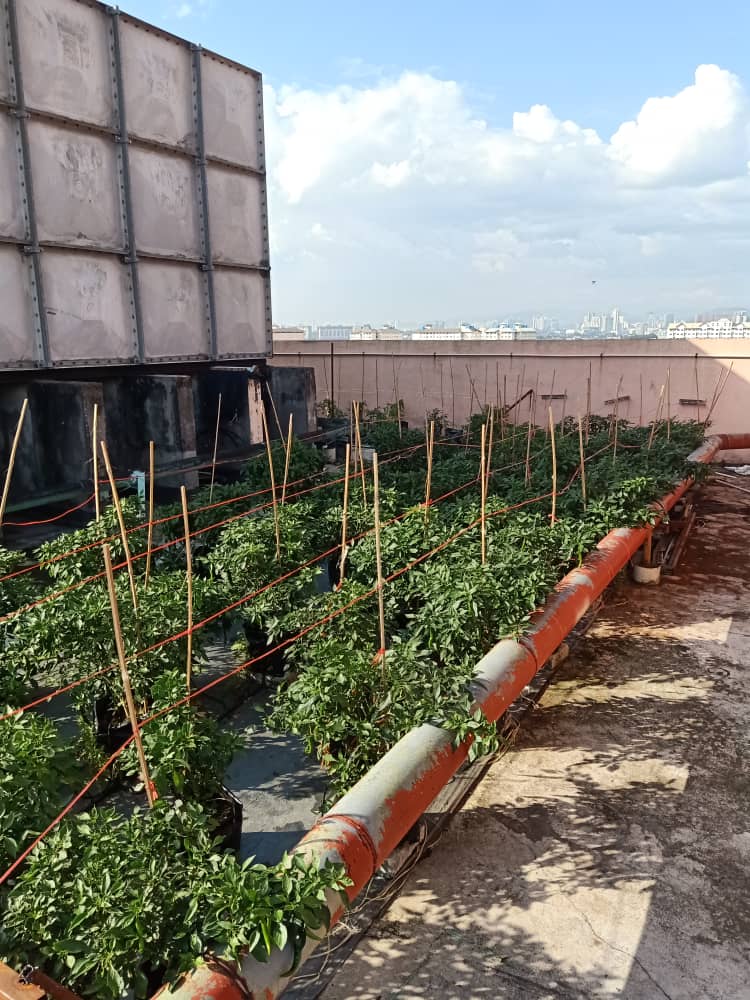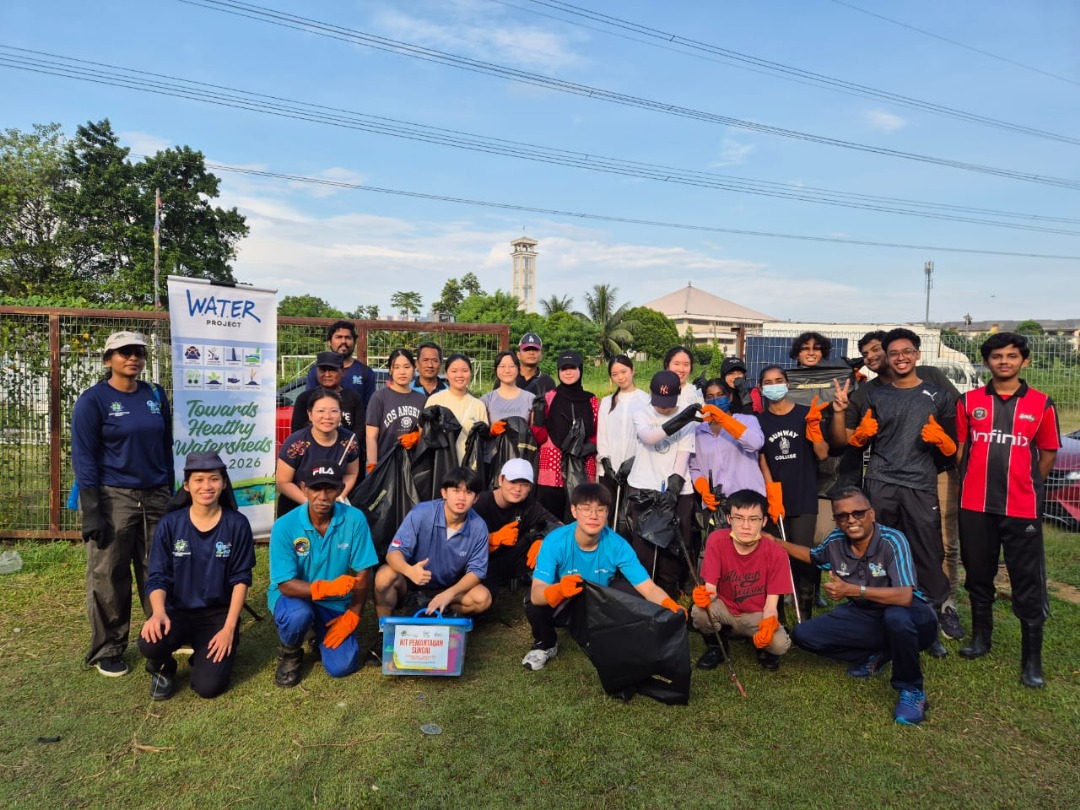After expanding the project to the 3-year Sungai Penchala River Education Programme, ongoing Sungai Way Project initiatives are sustained by communities especially from the Sahabat Komuniti Sungai Way. The initiatives include (open image in new tab for full resolution):
The W.A.T.E.R. project team realized that behavioural changes alone would not be able to reduce the water consumption but need effective and cheap water saving device. Thimbles (in Figures) are button-like structures that can be fixed at aerators or showers, and easy to be fixed that not need any plumbing works. In Malaysia, thimbles are already promoted by PBA in Penang, SAJ in Johor and latest is Air Selangor in Selangor. Thimbles with the following advantages are selected as water saving devices (WSD) to be given to communities as part of water conservation initiatives.
Thimbles are proven to assist in reducing water consumption in Singapore. But, there was no local data or publicly available data to support the effectiveness of thimbles. Therefore, W.A.T.E.R. project took the challenge by introducing thimbles to communities in Selangor at selected river basins and quantify the water reduction from using thimbles. Currently, 1292 beneficiaries from 281 house units from Block 1 Desa Mentari, Blok 3 Desa Mentari, Blok 5 Desa Mentari, and Block 11 Desa Mentari are benefitting from the initiatives. The thimbles water saving study conducted with community participation showed thimbles save 19 litres of tap water per person per day.
The W.A.T.E.R Project has installed Rain Water Harvesting Systems (RWHS) to support several communities in Desa Mentari and the Sungai Way Community River Information Centre. These systems provide non-potable water for community gardens and clean-up activities, helping reduce reliance on treated water.
Table 1. Summary of volume captured by the rainwater harvesting systems
| No |
Project Location |
Supply (m3) |
Volume Captured (m3) |
| 1 |
Block 1 Desa Mentari |
1557 |
1557 |
| 2 |
Block 3 Desa Mentari |
217 |
217 |
| 3 |
Block 5 of Desa Mentari |
882 |
882 |
| 4 |
Block 11 of Desa Mentari |
186 |
186 |
| 5 |
Resident Association of Section 14 |
163 |
163 |
| 6 |
Sg Way River Care Community Centre |
217 |
217 |
| 7 |
Sg Penchala River Care Centre |
217 |
217 |
| 8 |
Urban Hijau Community Garden |
217 |
217 |
| 9 |
Section 19 RA, PJ |
237 |
237 |
| 10 |
PJ Eco Recycling Plaza |
905 |
905 |
| 11 |
KRT Seksyen 6, PJ |
163 |
163 |
| 12 |
TTDI Edible Garden |
217 |
217 |
| 13 |
Praise Emmanuel Children's Home |
84 |
84 |
| 14 |
Kebuniti RA 22 |
84 |
84 |
| 15 |
Taman Bukit Mayang Emas |
109 |
109 |
| 16 |
Taman Sri Indah Community members |
181 |
181 |
(3) Community Garden Initiatives
W.A.T.E.R Project supports several communities at Desa Mentari with community garden initiatives as HEART Approach for them to adopt river monitoring and water saving practices. The communities benefitting from the initiative include Block 1 Desa Mentari, Block 3 Desa Mentari and Block 11 Desa Mentari.
Blok 1 Community Garden
Blok 3 Community Garden
Blok 11 Community Garden

(4) River Clean-Ups
An awareness programme to remind the communities on their ownership and responsibility to keep their rivers clean.
Latest Updates
1)Sungai Way River Cleanup
On 18 May 2025, a total of 20 volunteers—comprising 19 college students and 1 lecturer from Sunway University—participated in the Sungai Way River Cleanup Siri 1/2025 under W.A.T.E.R. Project. In the morning, volunteers gathered for an introductory briefing on the significance of river clean up initiatives. Following that, tools such as gloves, boots, trash pickers, and garbage bags were distributed. Before the cleanup commenced, the volunteers were introduced to the concept of RIVER Ranger 2.0 Monitoring Programme, demonstrating both physical and chemical methods for water quality assessment.

The cleanup covered river and the community park adjacent to the river. As volunteers carried out their tasks, they were encouraged to observe and identify environmental issues contributing to river pollution. Dr. Kalithasan highlighted ongoing protection efforts, including the wetland planting such as aquatic umbrella plants (Cyperus alternifolius) and the installation of river care educational signboards by the river.
After the cleanup, volunteers segregated and weighed the collected waste. A total of 25.7 kg of waste was collected, consisting of:
• Plastic: 27.24%
• Others: 36.58%
• Glass: 7.9%
• Paper: 3.1%
• Cans: 1.6%
• Non-Recyclables: 19.8%
• Organic Waste: 3.9%
The volunteers were also introduced to the log boom system installed, designing to trap large debris and prevent blockages in the river. The event concluded with a sharing session based on their level of understanding and actions, which can contribute to ongoing efforts to protect and preserve our water resources.
2) River Walk with the General Public
On 17 August 2025, a total of 26 participants – 15 adults and 11 children – took part in the River Walk along the Bukit Kiara Keladi Trail from 8:00 AM to 11:30 AM.
The programme began with a short introduction to the Global Environment Centre (GEC) and the W.A.T.E.R Project, supported by the SPARK Foundation, followed by an overview of the background of Sungai Penchala.
The River Walk featured four interactive learning stations:
-
Station 1 – Source of Sungai Penchala
Participants were guided to search for the tiny droplets of water that eventually merge to form Sungai Penchala, creating a sense of connection with the river’s origin.
-
Station 2 – Voice of the Stream
Along the Keladi Trail, participants sat quietly by the riverbank to tune in to the “voice” of the stream and the surrounding natural sounds, fostering mindfulness and appreciation of the river’s presence.
-
Station 3 – Meandering
Here, the group explored the importance of river meanders in maintaining ecosystem health and aiding water retention. They compared the river’s natural curves with straightened, concrete-lined rivers in urban areas, sparking discussions on the value of natural river systems.
-
Station 4 – Water Quality Monitoring
The GEC team introduced three monitoring methods: physical, chemical, and biological. Participants began by observing the river’s environment, then assisted in chemical testing and data recording using the River Ranger Datasheet. The highlight was biological monitoring, where participants entered the water under the guidance of the GEC team. Together, they discovered species such as shrimp, river prawns, caddisfly nymphs, and small fish – clear indicators that clean rivers are vital habitats for aquatic life.
The event ended with a sharing and reflection session, where participants expressed a deeper appreciation for rivers and the ecosystems they support. The River Walk successfully wrapped up at 11:30 AM, leaving participants inspired to value and protect waterways like Sungai Penchala.
3) River Walk with Spark Foundation team and general public
On 20 September 2025, a total of 21 participants – 20 adults and 1 child – joined the River Walk along the Bukit Kiara Keladi Trail.
The programme began at Station 1 – Source of Sungai Penchala, where Dr. K. Kalithasan and Ms. Jage introduced the Global Environment Centre (GEC) and the W.A.T.E.R Project, funded by the SPARK Foundation. Participants were then invited to trace the journey of tiny water droplets that merge to form the Sungai Penchala stream, building awareness of the river’s origins.
At Station 2 – Voice of the Stream, participants sat quietly along the riverbanks to tune in to the sounds of flowing water and surrounding nature, guided by reflections from Dr. Kali and Ms. Jage on the significance of living rivers.
The walk continued to Station 3 – Meandering, where participants learned about the importance of natural river bends in maintaining ecosystem health and water retention, and compared them with straightened, concrete-lined rivers often seen in urban areas.
The final stop, Station 4 – Water Quality Monitoring, introduced three monitoring methods: physical, chemical, and biological. Participants observed the river environment, assisted in chemical testing, and recorded their findings in the River Ranger Datasheet. Under GEC’s guidance, they also took part in biological monitoring by entering the river and identifying aquatic life. By the end of the session, the group had discovered six species, including shrimps, prawns, insects, and small fish — a strong indicator of the river’s ecological health and the dependence of aquatic species on clean water.
The River Walk concluded with a sharing and reflection session, where participants expressed their appreciation for rivers and a renewed sense of responsibility to protect Sungai Penchala.